Why does seafood protect your heart?
During this 57th American Heart Month, there’s lots of talk about how to eat well for your heart. At Wild for Salmon, we strive to provide a seafood product you can trust and are proud to offer products that protect, strengthen, and serve heart health. Despite 57 years of education around heart health, heart disease remains to be the number one killer of Americans, which is why federal leadership declared February Heart Health month again in 2021.
Heart health organizations like the American Heart Association highlight the importance of consuming enough dietary fiber and reducing intake of saturated fat, sodium and sugar by choosing wholesome, nutrient-rich foods. Thankfully, most seafood is full of good fat, which makes it not only delicious but good for your overall health, and your heart. Wild fish is a whole food, with no additives or unnatural chemicals. Wild salmon, in particular, can help protect against heart disease because it can increase levels of omega-3 fats (the good ones!), while also lowering triglyceride levels. Triglycerides are energy-storing lipids, which we need, but high levels of them are linked to illness like heart disease.
In this blog, we will discuss what kinds of seafood are best for heart health, the importance of Omega-3s, and how often you should be eating wild salmon and seafood for a heart-healthy diet.
What seafood is best for heart health?

Because Omega-3 fatty acids are stored in the fat tissue of most fish, fatty options like wild Alaska salmon and sustainably-caught tuna are good choices for heart health, as well as mackerel, herring and some trout. Like beef, in salmon, the white striations of the meat are the fat tissues, which are explained a bit further in this video explaining the significance difference between farmed and wild sockeye salmon. It is important to note that there are both good and bad fats - both in our bodies and in the bodies of the things we eat. Wild salmon has higher amounts of the good fats (Omega-3s) and lower amounts of the bad ones than farmed salmon - not to mention the added dyes and chemicals added to farmed fish!
Although we know it is primarily the Omega-3 fatty acids present in fish that directly support your heart health, quality, wild seafood is good for you because it also supports your immune system and other important bodily systems.
What do Omega 3 fatty acids do?
Ok, we know that these good-for-you Omega-3 fatty acids can be found in wild salmon and other seafood - don’t forget, white fish is healthy too - but what do these fatty acids actually do for you?
In broad strokes, Omega-3 fatty acids are integral to cell health, which you might remember from your high school biology class, are the building blocks of life. Healthy cells mean healthy bodies; the fatty acids are an integral part of cell membranes and affect function of the cell receptors in the cell membranes.

Omega-3s reduce triglycerides, support a regular heartbeat while reducing risk of arrhythmias, and reduce the possible build up of plaque which can lead to unhealthy arteries. Because they’re good for your blood vessels, they’re good for your heart. Afterall, your heart relies on your blood vessels to bring oxygen to the body. There is further evidence that getting these Omega-3 fatty acids from your diet is more beneficial than from supplements.
The less fatty seafood offered here at Wild for Salmon - like Pacific Cod or Shrimp - may not offer the same benefits as the Omega-3 fatty acids found in wild sockeye salmon or halibut, but their other benefits, like high protein, are also strong and should be integrated into your diet.
How often should you eat seafood for heart health?
The American Heart Association recommends two servings of fatty fish each week. By most nutritional measures, a serving of fish is about 3.5 ounces cooked, or about ¾ cup of flaked, or ground, wild fish. Our canned wild salmon comes conveniently in approximately two-serving cans - 6oz for the bone-less product and 7.5oz for bone-in.

Wild for Salmon’s sockeye portions are cut into a restaurant portion, typically between 5-7 ounces. Our other Omega-3-packed option, wild albacore tuna from the Pacific Coast, comes in one-pound loins or portioned medallions that average to 3oz - with 2.1g of Omega-3 fatty acids in a 3.5oz serving.
Another way to enjoy fatty fish and benefit from the high levels of Omega-3s and protein is in soup. Like bone broth sold at your local Co-op, you can make fish stock with wild Alaskan salmon heads or halibut bones. Check out these and other products in our Specialty Seafood section.
Salmon Avocado Salad with Canned Salmon
This canned salmon salad recipe by our friend Wellness with Edie promotes canned salmon to a front-row seat and helps us imagine how creative we can get with it. Edie is a certified Integrative Nutrition Health Coach thus we trust especially that this a good one to strengthen our overall health and wellbeing as winter continues!

You’ll need...
- 2 cans of wild-caught, Alaska salmon from Wild for Salmon Bone-In is fine for this recipe! They are cooked through, small, and add a punch of protein to your recipe. If you prefer to skip them, however, try our bone-less cans here.
- 1 ripe avocado
- 1 T dijon mustard
- 2 t minced garlic
- ¼ capers
- ⅓ fresh dill
- Lemon juice
- Black pepper
- Red chili flakes (optional)
To make the salad mash together the canned salmon and pitted avocado in a large mixing bowl. Then, add dijon, minced garlic, and lemon juice and mix together. Gently fold in your capers, chopped dill and spices to taste. This wild salmon and avocado salad is best served chilled - stick the whole bowl in the freezer for 10 minutes or in the fridge for 30 before serving. This recipe also works with leftover, cooked salmon; to try Jenn’s version of salmon salad, click here.
Grilled Albacore Tuna with Orange Marinade
This time, skip the cans, and treat yourself to a wild-caught Pacific Tuna loin or medallion. This orange and soy marinade needs time; plan for six hours or overnight for the best tasting tuna medallions you’ve ever had!
- 1.5lb Wild Caught Albacore Tuna
- 1C Orange Juice
- 3/4C Brown Sugar
- 1/4C Soy Sauce or Liquid Aminos Substitute
- 3/4C Cooking oil of your choice
- 1 TBSP Orange Zest
- 1 SM Green Onion
To cook, it is best to sear the tuna on a hot grill for just a few minutes each side. To avoid overcooking, you want the tuna to remain pink in the middle. It will continue to cook once removed from the grill. Read more about the recipe with American-caught wild tuna here. Try this marinade with salmon too!
Why is providing heart healthy fish important to us?
At Wild for Salmon, none of us are doctors; we’re just a bunch of fishermen who value quality seafood, time on the water, and feeding our families a natural product. And, we all love to eat - on the go with the kids in the car, around a big table of family and friends when it’s safe to do so, sometimes bouncing from truck to truck in the Bloomsburg brick & mortar parking lot during Fishtival.
We are so grateful to not have to sacrifice our love of food for our value of health, and we don’t want you to have to do that either. Eating well and nourishing our bodies has been important to us from the get-go. We strive to make the healthiest wild seafood available to our customers at a reasonable price for this very reason. Healthy food should be accessible to all - and your pets!
For more on what makes seafood one of the most recommended foods by American doctors, you can read more about the benefits of wild seafood on our Health Benefits page.




 Wild Alaska Salmon
Wild Alaska Salmon Alaska Salmon Burgers
Alaska Salmon Burgers Smoked Salmon & Seafood
Smoked Salmon & Seafood Wild Alaska Whitefish
Wild Alaska Whitefish Wild Shellfish & Shrimp
Wild Shellfish & Shrimp Wild Albacore Tuna
Wild Albacore Tuna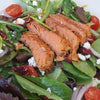 Canned Seafood
Canned Seafood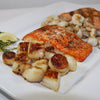 Meal Box & Samplers
Meal Box & Samplers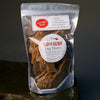 Pet Products
Pet Products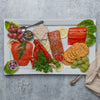 Gifts
Gifts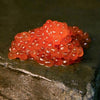 Specialty
Specialty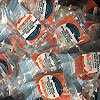 Wholesale Ordering
Wholesale Ordering